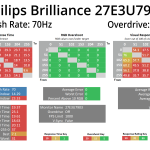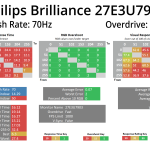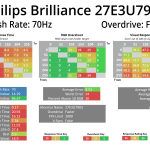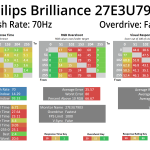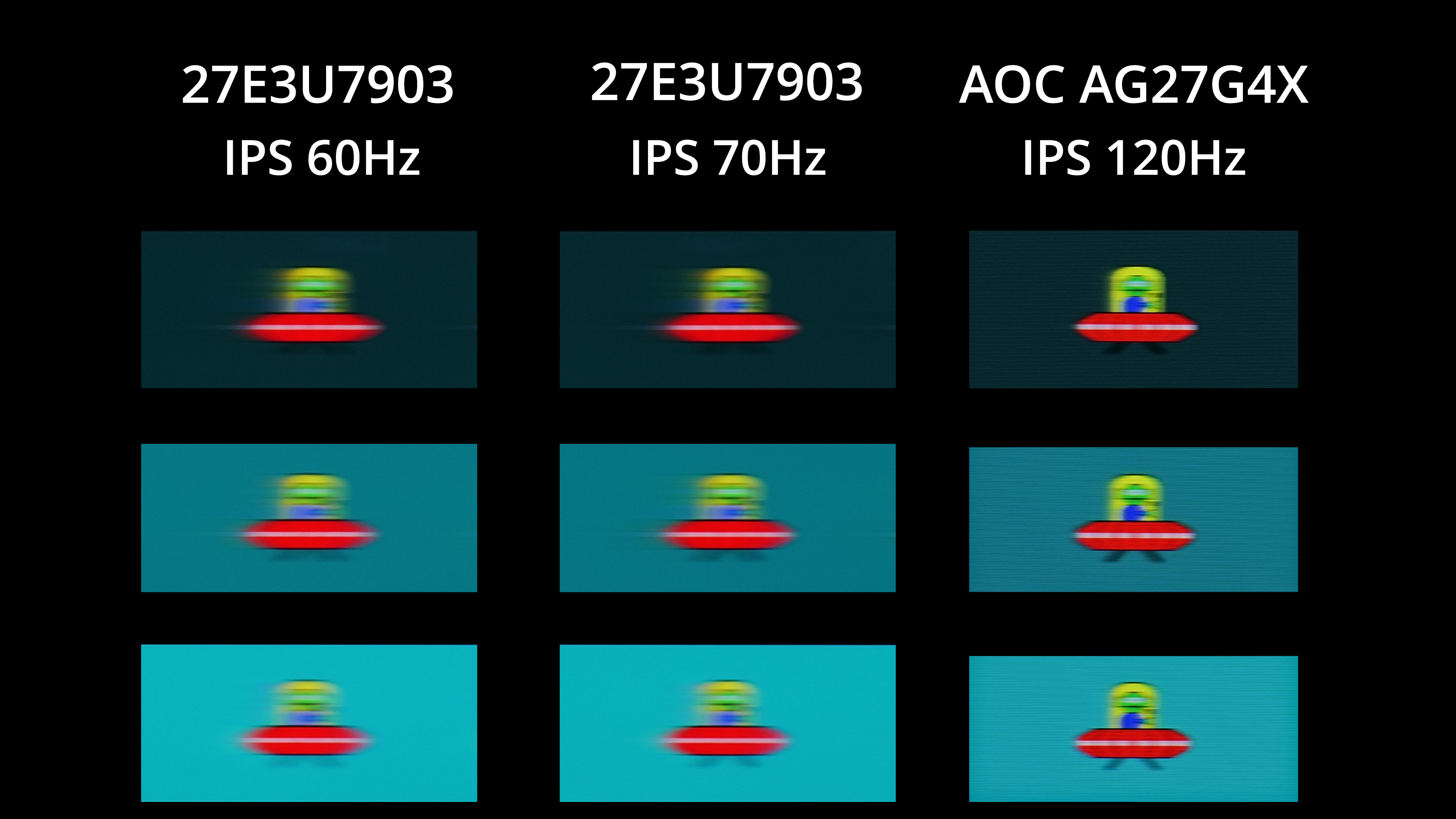We use the Open Source Response Time Tool (OSRTT), developed by TechTeamGB, for our response time testing. This measures grey-to-grey response times and presents the results in a series of heatmaps, the style of which you may be familiar with from other reviews.
Initial Response Time is the time taken for the panel to transition from one colour to another, where lower values are better. We present the initial response time, so overshoot is not taken into account and is measured separately. We use a fixed RGB 5 tolerance for each transition.
Overshoot is the term given for when a monitor's transition exceeds or goes beyond its target value. So if a monitor was meant to transition from RGB 0 to RGB 55, but it hits RGB 60 before settling back down at RGB 55, that is overshoot. This is presented as RGB values in the heatmaps – i.e. how many RGB values past the intended target were measured.
Visual Response Rating is a metric designed to ‘score' a panel's visual performance, incorporating both response times and overdrive. Fast response times with little to no overshoot will score well, while slow response times or those with significant overshoot will score poorly.
We test the 27E3U7903 at 70Hz, using all four of the overdrive settings found within the OSD.
We tested the 27E3U7903 at its native 70Hz refresh rate, with overdrive off, then using each of the Fast, Faster and Fastest modes. With overdrive off and on Fast, the results are very slow. Faster makes a big difference, but even then, the average response time is just 9.17ms, with some particularly slow fall times (as shown in the bottom left corner of the heatmap.) Some overshoot is introduced too, but nothing major. The final mode, Fastest, introduces loads of overshoot and isn't worth using either.
I've also included this motion clarity example so you can see what the monitor looks like in practice. We're comparing the 27E3U7903 to the AOC Q27G4X, a budget 1440p 180Hz IPS screen which I ran at 120Hz for the purposes of this test.
As you can see, there is a fair amount of motion blur visible from the 27E3U7903, while running it at 60 or 70Hz doesn't make much difference in the real world. Clearly, an IPS panel running at 120Hz looks substantially clearer. Of course, you can argue as to whether or not a professional screen like this needs a refresh above 60/70Hz, and it may not be a factor for many considering this type of screen. Most pro-grade screens that offer a 120Hz refresh rate will be significantly more expensive, too, but we thought it was worth including the comparison so you can make your own decision.
 KitGuru KitGuru.net – Tech News | Hardware News | Hardware Reviews | IOS | Mobile | Gaming | Graphics Cards
KitGuru KitGuru.net – Tech News | Hardware News | Hardware Reviews | IOS | Mobile | Gaming | Graphics Cards


